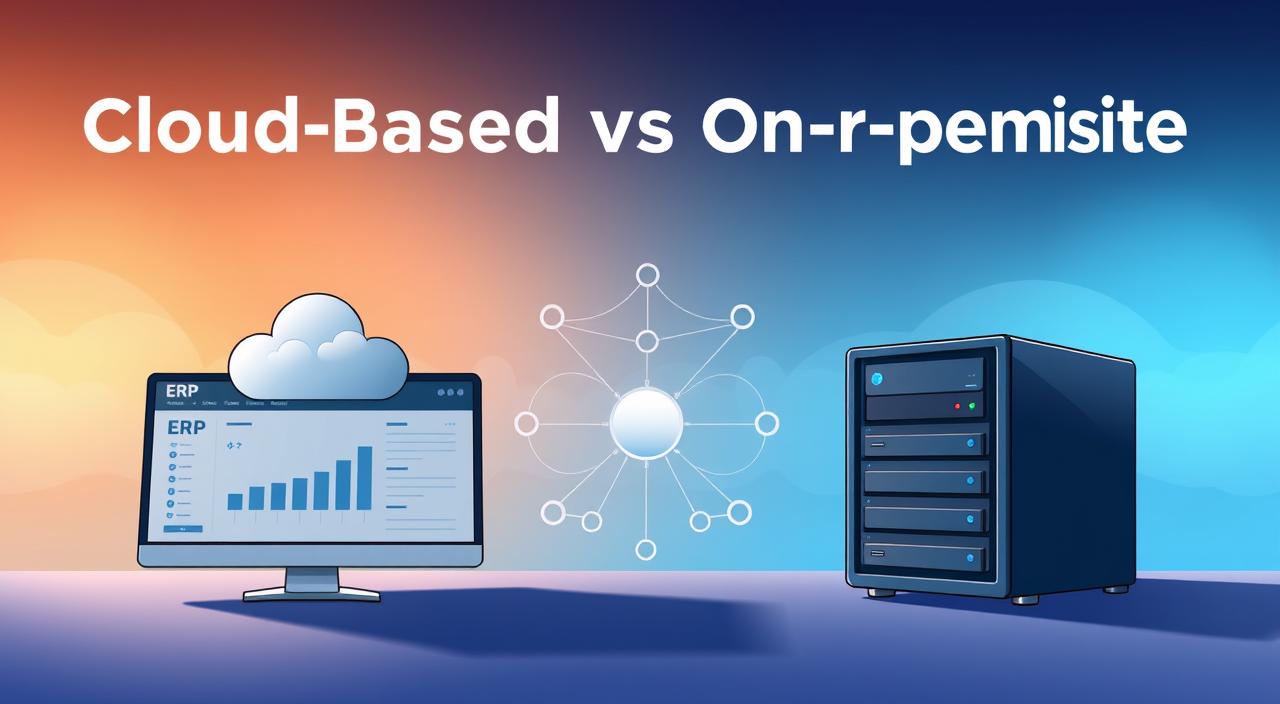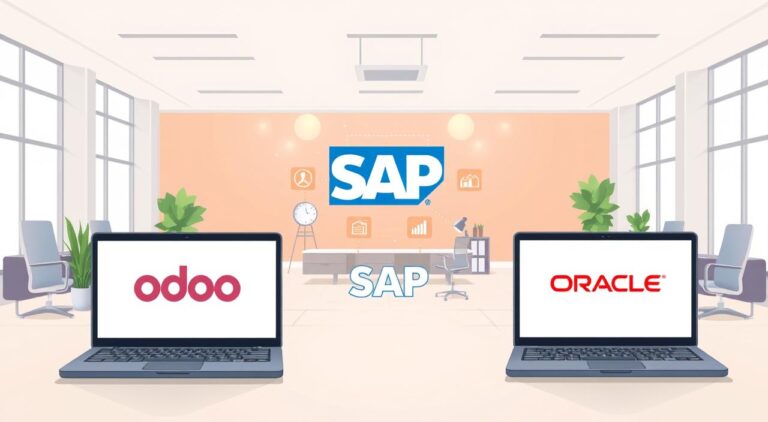Cloud ERP vs On-Premise ERP: Pros and Cons Unveiled
In today’s fast-paced business landscape, the choice between Cloud ERP and On-Premise ERP systems has become a pivotal decision for organizations of all sizes. Understanding the advantages and disadvantages inherent in each deployment option is crucial for businesses aiming to optimize their operations. This ERP systems comparison will delve into the distinct features of both solutions, enabling decision-makers to make informed decisions tailored to their unique organizational needs.
Key Takeaways
- Cloud ERP offers scalability and flexibility in resource allocation.
- On-Premise ERP systems provide extensive control and customization options.
- Understanding the advantages and disadvantages of each approach is vital.
- Accessibility in Cloud ERP enhances collaboration among remote teams.
- On-Premise solutions often offer superior data security essential for compliance.
- Evaluating long-term costs is crucial in the Cloud ERP vs On-Premise ERP decision.
Understanding Cloud ERP
Cloud ERP represents a transformative approach to enterprise resource planning by leveraging cloud technology. This system provides businesses with a comprehensive platform hosted on remote servers, accessible through the internet. The definition of Cloud ERP encompasses its core functionality, enabling organizations to operate without the traditional limitations of on-premise solutions.
What is Cloud ERP?
At its core, Cloud ERP refers to a suite of integrated applications designed to manage business processes across various departments. With Cloud-based ERP software, organizations can access crucial data in real-time, facilitating better decision-making and responsiveness. This shift from on-premise to cloud-hosted solutions enhances operational efficiency by reducing IT overhead and infrastructure costs.
Key Features of Cloud ERP
Several features make Cloud ERP an attractive option for businesses. Notable characteristics include:
- Real-time data access: Instant visibility into key metrics and performance indicators.
- Automatic updates: Seamless software upgrades without the need for manual intervention.
- Scalability: Ability to easily adjust resources and functionalities based on organizational growth.
These attributes contribute to the significant benefits of Cloud ERP, including enhanced flexibility and reduced operational costs.
Use Cases for Cloud ERP
The versatility of Cloud ERP allows it to cater to diverse industries and business needs. Common use cases include:
- Manufacturing: Streamlining supply chain operations and inventory management.
- Retail: Enhancing customer engagement through integrated sales platforms.
- Finance: Managing accounting processes and compliance requirements efficiently.
Organizations can harness the benefits of Cloud ERP to optimize their processes and gain a competitive edge in their markets.
Overview of On-Premise ERP
On-Premise ERP systems represent a traditional approach to enterprise resource planning, offering businesses greater control and security over their data. This delivery model involves software installed directly on company servers, allowing firms to customize the setup to fit their specific requirements better. The definition of On-Premise ERP outlines that this solution enables a high level of ownership and management of data, which attracts many organizations focused on data integrity and regulatory compliance.
Defining On-Premise ERP
The definition of On-Premise ERP emphasizes its localized nature, where software resides on an organization’s infrastructure. This setup differentiates it from Cloud ERP, showcasing a clear choice for companies that prioritize in-house data management. Organizations can install, configure, and maintain the software according to their unique operational needs.
Common Features of On-Premise ERP
Understanding the features of On-Premise ERP is crucial for organizations evaluating their options. Key aspects include:
- Customization: Businesses can tailor systems to their specific industry requirements, enhancing functionality.
- Data Control: Organizations maintain full authority over their data security and storage, minimizing risks associated with external providers.
- Integration: On-Premise ERP can easily integrate with legacy systems, facilitating a smoother transition and operational continuity.
- Offline Capability: These systems can operate without internet access, ensuring continuous performance even during connectivity issues.
When comparing ERP systems, it is evident that On-Premise ERP solutions offer distinct advantages in customization and data control that attract many organizations looking for robust, tailored ERP applications.

Pros of Cloud ERP Solutions
Cloud ERP solutions provide numerous benefits that cater to diverse business needs. With their flexible nature and advanced features, organizations can unlock significant value and streamline operations effectively. Understanding these advantages can assist businesses in making informed decisions.
Cost-Effectiveness and Scaling
The cost-saving benefits of Cloud ERP are clear. Unlike traditional ERP systems, which often require substantial upfront investments, Cloud ERP offers a more manageable subscription pricing model. This financial flexibility enables companies to allocate resources more efficiently. Additionally, the scalability of Cloud ERP allows businesses to easily adjust their usage based on growth or changing requirements, accommodating rising demands hassle-free.
Accessibility and Collaboration
One of the standout Cloud ERP advantages is its accessibility. Teams can work seamlessly from any location, enhancing collaboration among members. This feature is crucial in today’s remote working environment, where instant access to data drives efficiency. The accessibility of Cloud ERP empowers employees to remain connected, share information, and make quick decisions, fostering a more agile work culture.
Automatic Updates and Maintenance
Automatic software updates are another major benefit of Cloud ERP systems. Organizations benefit from ongoing improvements and new features without the traditional burdens of manual upgrades. This aspect not only saves time and resources but also ensures that businesses leverage the latest technology to maintain a competitive edge. With minimal IT involvement required for maintenance, teams can focus their efforts on core activities.
Advantages of On-Premise ERP
On-Premise ERP systems present a variety of benefits that align well with the unique needs of organizations, particularly those requiring stringent data management. Understanding these On-Premise ERP advantages is crucial for businesses that prioritize control, enhanced security, and peak performance.
Control and Customization
Organizations gain substantial data control with On-Premise ERP, allowing them to tailor their software according to specific requirements. This level of customization fosters greater operational efficiency, as companies can develop solutions that directly align with their business processes.
Enhanced Security and Compliance
Security in On-Premise systems plays a vital role in safeguarding sensitive information. By keeping data on-site, companies have more direct oversight of their security protocols. This environment also supports compliance with regulatory standards, making it easier for businesses to adhere to industry guidelines.
Performance and Reliability
The reliability of On-Premise ERP is a standout feature, as performance does not depend on internet connectivity. Resources are managed directly, resulting in improved system responsiveness. For organizations managing extensive data, this reliability can significantly impact operational productivity.

Weighing the Cons: Cloud vs On-Premise ERP
As businesses evaluate their ERP options, understanding the limitations of both Cloud and On-Premise systems becomes critical. The disadvantages of Cloud ERP include reduced personalization and control over data, which can pose challenges for organizations requiring specific configurations to meet their operational demands. Additionally, while providers ensure robust security measures, the inherent risks of data breaches in a cloud environment persist, raising concerns for many businesses.
Limitations of Cloud ERP
Cloud ERP offers convenience but comes with its own set of drawbacks. One major limitation is the reliance on internet connectivity, which, if disrupted, can hinder access to essential functions. Furthermore, businesses may find themselves tied to a vendor’s ecosystem, limiting flexibility in changing providers. For organizations that prioritize complete autonomy over their systems, this aspect can be a significant disadvantage leading to complicative ERP decision-making.
Challenges of On-Premise ERP
On-Premise ERP, while offering enhanced control and customization, is not without its challenges. The initial investment can be substantial, and ongoing maintenance can strain financial resources. Moreover, company-specific IT infrastructure needs to be continually updated, which may divert attention from core business activities. These drawbacks of On-Premise ERP can potentially outweigh its benefits for some businesses, making it essential to carefully weigh your options.
Making the Right Choice for Your Business
Ultimately, the decision between Cloud and On-Premise ERP involves a comprehensive analysis of your organization’s unique requirements. Identifying the disadvantages of Cloud ERP alongside the drawbacks of On-Premise ERP can inform the choice that best aligns with your operational goals. Whether incorporating a hybrid approach or committing to one system, understanding these intricacies ensures that companies select the right ERP solution tailored to their needs.




